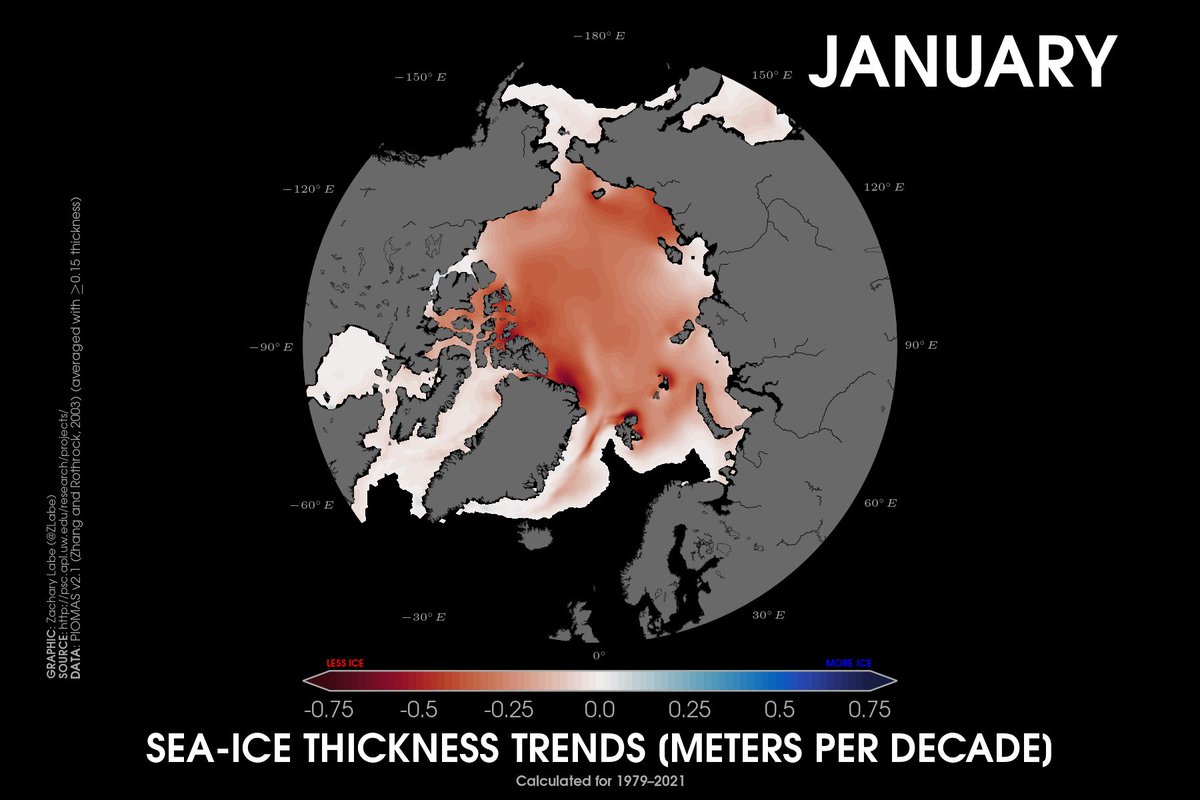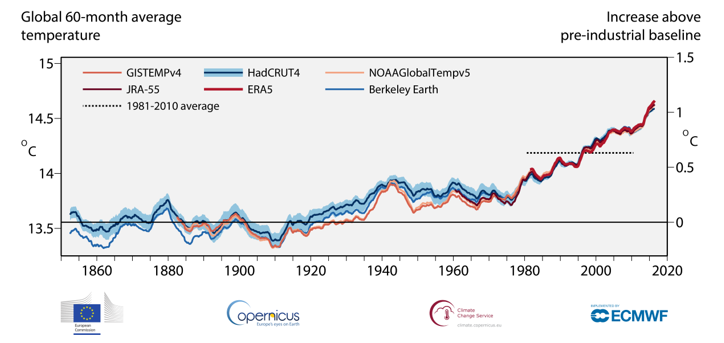
🧵 While extreme events receive a lot of the attention in the #Arctic, it's more the long-term trends that are transforming this part of the world. Interannual variability (e.g., weather) is also large, which is why not every year is a new record. Here are those January trends:
Nearly all areas of the #Arctic have observed thinning ice over the last four decades. Trends in January are largest in the vicinity of the East Siberian Sea and north of Greenland.
[Data simulated from PIOMAS. For more info: doi.org/10.1175/JCLI-D…]
[Data simulated from PIOMAS. For more info: doi.org/10.1175/JCLI-D…]

In contrast, sea ice concentration trends in January are only confined to the outer edges of the #Arctic Ocean, such as the Barents-Kara Seas and Sea of Okhotsk.
[Sea ice concentration = fraction of ice-cover. For more info: doi.org/10.1175/BAMS-D…]
[Sea ice concentration = fraction of ice-cover. For more info: doi.org/10.1175/BAMS-D…]

While most of the #Arctic Ocean is predominately ice covered in January, the edges reveal warming at the ocean surface. Warming trends are particularly large in the North Atlantic and Davis Strait/Labrador Sea.
[Data from OISSTv2.1. For more info: arctic.noaa.gov/Report-Card/Re…]
[Data from OISSTv2.1. For more info: arctic.noaa.gov/Report-Card/Re…]

Warming is not only confined to the surface, but also extends vertically aloft into the mid-troposphere. The warming in the stratosphere is related to the state of the polar vortex & its large variability.
[Data from @CopernicusECMWF ERA5. For more info: doi.org/10.1029/2020GL…]
[Data from @CopernicusECMWF ERA5. For more info: doi.org/10.1029/2020GL…]

Most of the #Arctic is experiencing warming temperatures over the last four decades in January. This is largest in the Barents Sea region and corresponds to losses of sea ice cover (turbulent fluxes).
[Data from @CopernicusECMWF ERA5. For more info: doi.org/10.1175/BAMS-D…]
[Data from @CopernicusECMWF ERA5. For more info: doi.org/10.1175/BAMS-D…]

• • •
Missing some Tweet in this thread? You can try to
force a refresh











